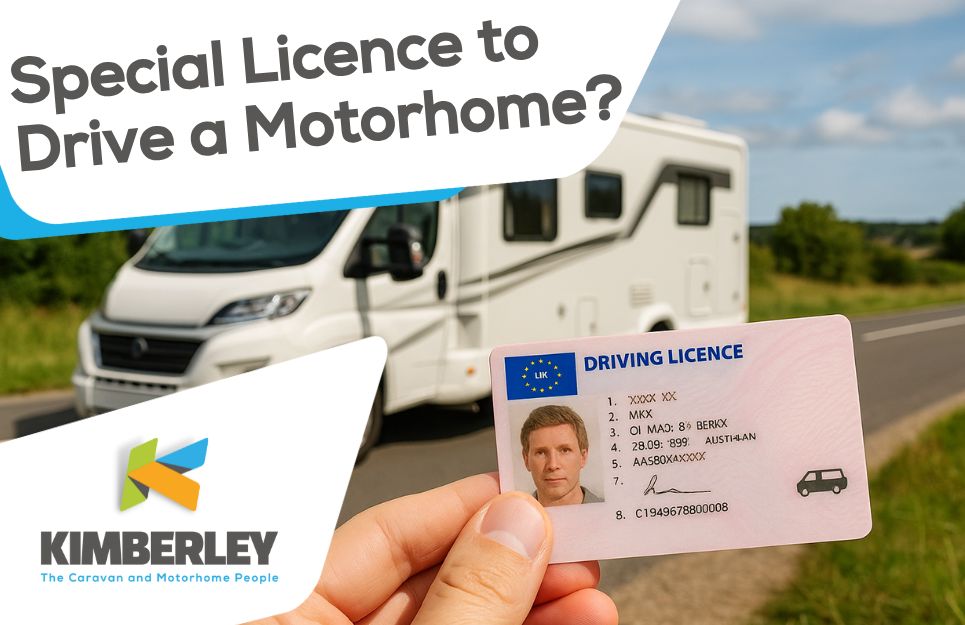
You’re standing in front of a beautiful motorhome. Maybe it’s a sleek Swift Voyager or a big coachbuilt beauty you spotted at a dealership. You can already smell the bacon frying on a misty Lake District morning. Then reality creeps in—hang on, am I even allowed to drive this thing?
If that’s you, don’t worry. You’re far from alone. Driving a motorhome in the UK isn’t just about turning the key—it’s about knowing whether your licence actually covers the weight and type of van you’ve fallen for.
Let’s clear things up. No legalese, no confusing jargon. Just a straight-talking guide to what you actually need to drive a motorhome.
Whether or not you need a special licence comes down to two key things:
When you passed your driving test
How heavy the motorhome is
You’re in luck. If you passed your driving test before this date, your standard Category B licence probably also includes C1 entitlement. That means you can legally drive vehicles up to 7.5 tonnes (7,500kg) Maximum Authorised Mass (MAM).
That covers most motorhomes on the road, even many of the big luxurious ones.
This is where things change. If you passed after this date, your standard Category B licence only lets you drive vehicles up to 3.5 tonnes MAM. And many motorhomes—especially larger coachbuilt or A-Class models—can exceed that.
So if you’ve got your eye on a van over that weight limit, you’ll need to upgrade your licence.
If your dream van tips the scales beyond your standard licence, don’t panic. You’re not the first—and won’t be the last—to go through the process.
You’ll need to:
Apply for a provisional C1 licence
Get a medical exam (yes, it’s required)
Take a theory and practical driving test
Sounds like a faff? Honestly, it’s not as complicated as it seems. We’ve written a full guide to walk you through the whole thing, from the forms to the finish line:
👉 How to Get a C1 Licence for a Motorhome
It’ll save you a lot of Googling—and potentially some awkward run-ins with over-keen campsite wardens.
While we’re here, let’s settle another one that gets mixed up with motorhome licences: towing a caravan.
You don’t need a C1 for that—but you do need to know your limits:
If you passed your test before Jan 1st, 1997, you’ve probably got BE entitlement and can tow pretty much any trailer or caravan combo within reason.
If you passed after, the rules used to be strict—but since December 2021, most standard licence holders can now tow trailers up to 3,500kg MAM without needing a separate test.
Still, double-check the combined weight of your car and caravan before heading out. That’s one area where “close enough” won’t cut it—your insurance could be void if you're overweight.
Right, you’ve got the right licence. All set? Not quite.
Motorhomes aren’t always treated like cars on the road. If your van is over a certain weight, the speed limits change:
| Road Type | Under 3.05 tonnes unladen | Over 3.05 tonnes unladen |
|---|---|---|
| Single carriageway | 60 mph | 50 mph |
| Dual carriageway | 70 mph | 60 mph |
| Motorway | 70 mph | 70 mph |
If your motorhome is over 3.5 tonnes, you’re also not legally allowed in the outside lane on a three-lane motorway. Yes, even if you’re in a rush. It’s a lesser-known rule, but it matters.
Let’s say the brochure says 3,499kg. Boom, you’re in the clear! But are you really?
That figure is the unladen weight, and it doesn’t account for:
You get the idea. Add all that in, and you might tip over your limit. Always check the Maximum Authorised Mass (MAM) and the payload capacity before setting off. No one wants to be that person pulled over on the M5 with a clipboard-wielding DVSA officer tapping on the window.
It might sound like a lot, but once you’ve got the facts straight, it’s honestly quite manageable.
Whether you’re downsizing, upsizing, or just getting into the motorhome lifestyle for the first time, understanding your licence entitlement is key. But it’s not a barrier—it’s just a box to tick.
Want help figuring it out? The team at Kimberley Caravans is always happy to talk through the legal stuff without making it sound like a driving instructor's lecture.
Still got questions or eyeing up a motorhome that might need a licence upgrade? Just drop us a message or pop into Kimberley Nottingham or Darlington—we’ll walk you through it, no pressure. Just coffee, common sense, and maybe a quick look inside that Swift you’ve been Googling for the past week.
.png) 21/07/2025
21/07/2025
Raffle winners from our Summer Showcase event 2025.
 09/07/2025
09/07/2025
If you’re thinking about upgrading your tourer, you’re probably already asking the same question as countless other enthusiasts: when are the 2026 Coachman caravans going to be available to order?
Coachman is famously discreet with exact launch timings, but if you’ve followed their seasonal pattern over the years, you’ll know there’s a clear rhythm to how these releases unfold. So, while we’re all waiting for official confirmation, here’s what typically happens—and what you can expect this year.
 15/05/2025
15/05/2025
So, you’re eyeing up a motorhome—and the name Swift keeps popping up. Maybe you’ve seen their vans at campsites, or spotted their distinctive styling at a dealership. The big question though?
Are Swift motorhomes actually any good?
Let’s break it down properly. No fluff. No sales jargon. Just real insight from one of the UK’s biggest brands—and what it means for you as a buyer.